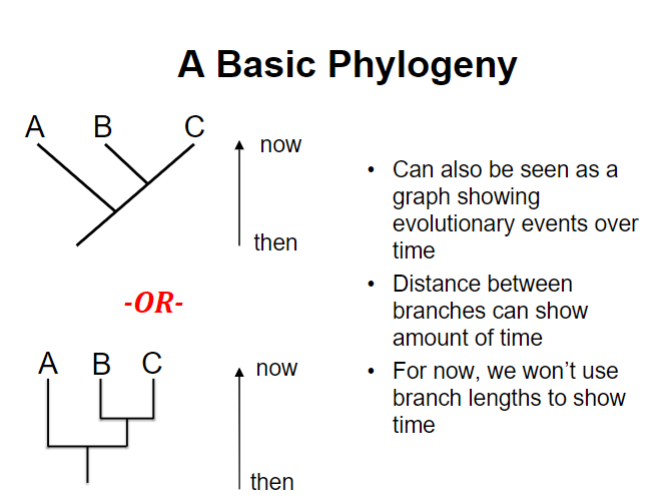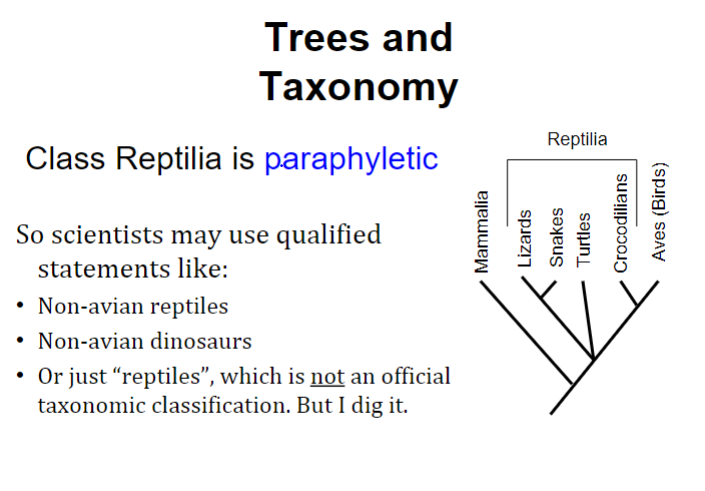Herpetology Notes Lecture 2
Phylogeny = phylogenetic tree = tree
Phylogenies depict the evolutionary history of a group of organisms.
Learning about phylogenies will help us understand traits as it’s like learning a new language.
Phylogeny trees tell us 3 thing:
Statement of relationships between two species.
Statement of the ancestry of these species
History of speciation (or splitting in general)
Branches = species or lineage in general
Node = two branches split (speciation)

Phylogeny trees can rotate branches w/o changing the tree or what it means.
Polytomy = node where relationships are uncertain (>2 branches from one node)
Resolution = two branches of a tree consistent with polytomy
Polytomies can be common, but systematists generally see them as a problem.
Terminal units can also be individual organisms or groups of species.
If the terminal unit represents a “higher taxon” then the terminal branch represents the common ancestor of all species in that group.
At one point in time, each group consisted of only a single species.
Trees & Taxonomy
Systematists start to describe species & make classifications based on anatomical characters, without believing in evolution
Linnaeus developed binomial nomenclature.
Ex: Hyla cinerea (the whole name is species, not just Hyla)
Darwin’s concept of descent with modification established a basis for using evolutionary relationships for taxonomy.
“Closely related” species are those that share a recent common ancestor that other species do not share.
3 terms influence taxonomy
Monophyletic: All species descended from a common ancestor. Also called a clade.
Paraphyletic: Species in group share a common ancestor but some descendants are excluded.
Polyphyletic: species in group do not share a recent common ancestor.
 A key debate in taxonomy is the use of ranks vs. classless clade names.
A key debate in taxonomy is the use of ranks vs. classless clade names.
Many folks just say a group’s name, without any rank, since many clades are interesting but do not correspond to a rank.
Two major groups of Osteichthyes
Actinopterygians (ray-finned fishes): includes most familiar fish that we eat and keep in aquaria
Sarcopterygians (lobe-finned fish): lungfish, coelacanths, and tetrapods.
Sacropterygii
Synapomorphies
Development of bony supports for pectoral and pelvic fins.
Enamel on teeth ( = hard white stuff that covers the bone/dentine of the tooth)
Tetrapoda
Many synapomorphies are associated with the origin of tetrapods.
Shoulder girdle separated from the skull
Ankle & wrist joints
stapes (important bone in the auditory system)
Two major clades of tetrapods
Amphibia (anurans, caudates, caecilians)
Amiota ( squamates, birds, mammals, crocodilians, turtles, others).